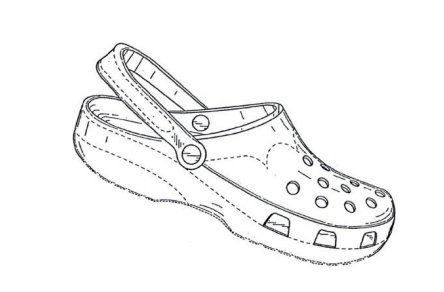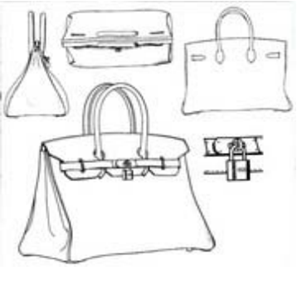The protection of 3D trademarks corresponding to the shape of the product
Picture by Uzunov Rostislav from pexels.com
It is well known that the registration of trademarks consisting of a three-dimensional shape is generally accepted by both the Italian Patent and Trademark Office (UIBM) and the European Intellectual Property Office (EUIPO). However, it is often difficult to obtain the registration and judicial protection for these trademarks, particularly when they are intrinsic to the shape of the finished product itself.
Two types of objections are normally raised against these 3D trademarks:
1. that they lack the distinctive character required by law for their validity (see here and here on this blog);
2. that they correspond to a shape that under art. 9 Italian IP Code (IPC) cannot be registered as a trademark, namely a shape that: a) results from the nature of the product; b) gives substantial value to the product; or c) is necessary to obtain a technical result (see here and here on this blog).
Here are some of the most recent and well-known decisions on the matter issued by the Italian courts.
1. Court of Turin, sentence of 4.4.2014, Docket no. 11405/2011 (Ritter Sport)
The IP Court of Turin granted protection to the trademark corresponding to the square packaging of Ritter chocolate, for the following reasons:
i) distinctive character is demonstrated by the survey carried out by the court appointed expert witness, based on which 60% of the interviewees who saw the mock-up of the packaging associated it with Ritter, and the same association was made by 49% of the interviewees who saw the photograph reproduced in the trademark application. Furthermore, the significant gap with the second company (which obtained 13% and 14%, respectively, of the associations with the mock-up / photograph) "demonstrates, beyond any speculation, the significant association with Ritter that the trademark arouses in consumers";
ii) this is not a shape that gives substantial value to the product: "the trademark at issue protects the almost square shape of the packaging and, consequently, the reference to the value of the product contained within it - that is the chocolate - whose substantial value is not aesthetic but depends on the flavour and quality of the ingredients from which it is made, is irrelevant";
iii) this is not a shape necessary to obtain a technical result, as it is not conditioned by technical constraints.
2. Court of Turin, sentence no. 1900/2017 + Court of Appeal Turin, decision no. 677/2019 (Vespa Piaggio)
The Turin IP Court also granted protection to the trademark corresponding to Piaggio's Vespa scooter, for the following reasons:
i) the trademark has an original distinctive character, having specific individualising characteristics and being associated with Piaggio by 78% of the interviewees according to a survey submitted by Piaggio;
ii) this is not a shape resulting from the nature of the product: "the world wide dissemination of the most disparate shapes of scooters demonstrates, without a doubt and without the need for further argumentations, that the shape of the Piaggio trademark is not the only possible shape for scooters and therefore it does not exclusively result from the nature of the product". Nor is it the "natural shape of the classic scooter ", given that " even the 'vintage' scooter could be made with characteristics that do not correspond with those typical of the Vespa";
iii) this is not a shape necessary to obtain a technical result: "the characteristics of the Vespa shape do not perform a specific technical function, or rather the possible technical effect that they entail can be achieved with other, equally functional, shapes, hence the Piaggio shape is not 'exclusively' dictated by a technical requirement. Nor is there any relevance to the fact that over 60 years ago the shape of the '46 Vespa had been the subject of a utility model”;
iv) neither is this a shape that gives substantial value to the product: "the reason for purchasing the scooter in the form of the registered Piaggio trademark does not depend exclusively on its specific aesthetic characteristics, but, to a far greater extent, for technical and economic reasons, that are more relevant to the consumer who is about to buy an expensive and long-lasting product".
The decision was confirmed by the Turin Court of Appeal, which stressed, among other things, that "the fact that Piaggio requested – and obtained from the first Court – protection under copyright law, and that, more generally, the product has undeniable aesthetic and artistic qualities, does not automatically make this a shape that gives a substantial value to the product. The shape of the Vespa remains inevitably connected to the main utilitarian function of the product that incorporates it. Due to its nature as a vehicle, it is most likely chosen by the consumer, first of all, for the well-known qualities in terms of performance, safety and reliability, as well as for its aesthetic qualities. (...) neither does granting copyright protection to the Vespa design, due to its creative and artistic value, qualify as "substantial value" that prevents registration as a trademark ".
3. Court of Turin, sentence no. 5140/2019 (Tic-Tac)
Again, the IP Court of Turin granted protection to the trademark corresponding to the packaging of Ferrero's Tic-Tac candies, stating in particular that:
i) the trademark has a distinctive character, as the counterparty was unable to prove the contrary;
ii) it is not a shape necessary to obtain a technical result, and the fact that the closing mechanism was previously protected by a utility model does not demonstrate the inverse;
iii) it is not a shape that gives substantial value to the product, not having an "aesthetic value of such relevance that can be considered influential in itself on the consumer's purchase motivation".
4. Court of Milan, order of 11.8.2014, docket no. 19325/2014 (Ferrero Rocher and Kinder Bueno )
The IP Court of Milan denied interim protection to the trademark corresponding to the shape of "Ferrero Rocher" chocolates, and instead granted it to the shape of "Kinder Bueno" wafers, for the following reasons:
i) the shape of Ferrero Rocher pralines would be necessary to obtain a technical result, in fact it was covered by a patent;
ii) the shape of Kinder Bueno wafers is instead distinctive and does not fall within the criteria referred to in art. 9 IPC. In fact, on the one hand, the counterparty did not provide evidence of the lack of distinctiveness, merely "affirming the existence of other products that would have identical characteristics, without any specific indication and above all without any time reference". On the other hand, "the trademarks in question also have arbitrary and capricious shapes" which are therefore not necessary, functional nor do they add any substantial value.
5. Court of Milan, sentence no. 7432/2015 (Nathalie bed)
The Court ruled out that the Nathalie bed by Flou, designed by Magistretti, could constitute a valid three-dimensional trademark, because its shape "is predominantly characterised by its aesthetic value " and therefore this gives substantial value to the product. "A shape that appears capable, purely due to its aesthetic value, to have a decisive impact on the consumers’ appreciation, so much so as to constitute in itself the motivation for purchasing the product, cannot be registered as a trademark". On the contrary, the impediment of the "substantial value" does not prevent the registration of a shape, albeit appealing from an aesthetic point of view, in which "the symbolic value of reference to the origin of the product from a specific company prevails" over the attractive element determined by its aesthetics.
6. Court of Milan, sentence no. 4716/2018 (Amaretto Disaronno)
The same IP Court of Milan granted three-dimensional trademark protection to the shape of the Amaretto Disaronno bottle, affirming its distinctiveness for the following reasons:
i) "The documentation submitted by the defendants – that, pursuant to art. 121 IPC, have the burden to prove the nullity of the registered trademark – does not provide significant elements", since it consists of images of bottles different from the one in question;
ii) the substantial documentation filed by the trademark owner demonstrates that the bottle has acquired a distinctive character, in light of:
- the fact that the bottle has been on the market since the 1980s
- the market surveys filed by the trademark owner
- the co-branding operations carried out with well-known fashion designers for the production of decorative limited edition bottles;
iii) "The acquisition of distinctive character through use can also be affirmed in favour of the three-dimensional trademark in question due to the constant use of the word mark in combination with this shape mark (see EU Court of Justice, judgment 7.7.2005 in case C-353/03, Nestlé) ".
7. Court of Milan, sentences no. 10280/2021 and no. 1679/22 (Le Pliage bag)
The IP Court of Milan also granted three-dimensional trademark protection to the Le Pliage bag, without however arguing about the distinctiveness or the prohibitions pursuant to art. 9 IPC.
8. Court of Venice, sentence of February 15, 2012 (Crocs)
The Court of Venice denied trademark protection for the shape of Crocs footwear, deeming it to be a shape that gives substantial value to the product. In this regard, the court stated:
i) "The case-law of trial courts has denied trademark protection when the shape, due purely to its aesthetic value, has a decisive impact on the consumers’ appreciation, so much so as to constitute, in itself, motivation for purchasing the product";
ii) "If, traditionally, the shape that gives substantial value to the product coincides with a particular aesthetic appeal, however, faced with the changing tastes and customs of the consumers, any shape is equally suitable to attribute substantial value to the product, even that which could be considered "ugly" or "funny", as long as it guides and determines the purchasing choices of the average consumer, creating in him/her a particular attraction";
iii) "The secondary meaning is suitable for making capable to be registered a shape trademark that was originally devoid of distinctive character, but not a trademark whose shape cannot be registered pursuant to art. 9 IPC as it results from the nature of the product itself or is necessary to obtain a technical result or gives a substantial value to the product".
However, it should be noted that, despite this, the Court granted protection to Crocs footwear against slavish imitation by a competitor.
9. Court of Venice, sentence no. 2306/15 + Court of Appeal of Venice, sentence no. 1230/17
The Venice Court and Court of Appeal denied three-dimensional trademark protection to the shape of a women's bag used to carry wine bottles, considering it to be a shape that gives substantial value to the product: "the consumer buys the bag for its aesthetic form corresponding to that of a handbag, preferring that product with that particular shape over the others on the market and not because he/she is guided by a message that indicates the origin of the goods".
10. Court of Florence, sentences no. 3442/16 and no. 300/17 + Court of Appeal of Florence, sentence no. 540/18
The Florence Court and Court of Appeal initially denied protection for the shapes of the Hermes "Kelly" and “Birkin" bags for the following reasons:
i) they lack original distinctive character, as the shapes in question "on the whole reproduce the canonical parameters of typical bags available on the market";
ii) acquired distinctiveness has not been proven because the documentation filed by Hermès (advertising, articles in trade magazines, references to the product contained in some films and television series) "originated from the producer and did not demonstrate the consumers’ consideration and the fact that the latter linked the shape to its manufacturer".
In the time elapsed between the first and second decision, however, the same Court of Florence, with the 2017 sentence, recognised the validity of the trademarks in question, considering them to be distinctive and considering that the respective shapes do not give substantial value to the product.












